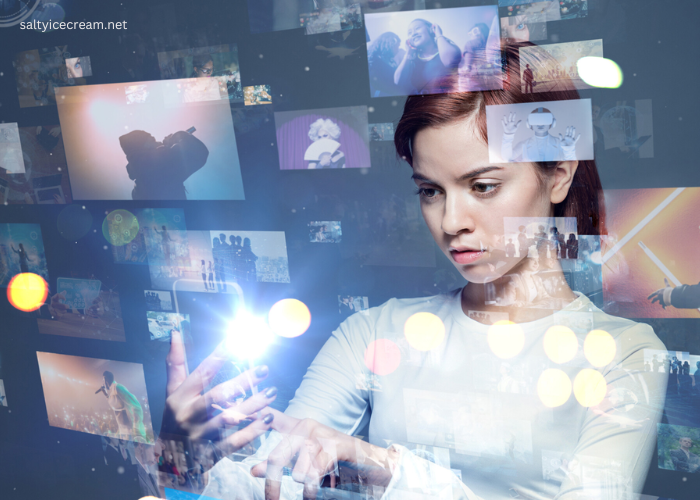Artificial Intelligence has grown to be an integral part of interactive media in recent years, completely changing how one creates, consumes, and interacts with content. From personalized gaming experiences to adaptive storytelling, AI is pushing the boundaries of what’s possible in entertainment and beyond.
How AI Enhances User Engagement
Interactive media thrives on engagement, and AI excels in analyzing user behavior to provide personalized experiences. For example, streaming services like Netflix and Spotify use AI algorithms to recommend content based on the history of viewing and listening. Similarly, gaming companies use AI to create adaptive difficulty levels, making sure players are always challenged but never frustrated. This personalization keeps users hooked, fostering longer engagement and brand loyalty.
Moreover, AI-driven innovations such as chatbots and virtual assistants have transformed customer support in interactive platforms by responding instantly and thereby increasing user satisfaction, making communication less cumbersome.
Among all other interesting applications, AI creative tools will remain at the forefront. Making an AI text to image generator is one such aspect wherein technology is enabling artists, designers, and hobbyists to bring their ideas to life with little or no technical know-how. It democratizes creativity by letting anyone contribute to making art.
AI Transforming Gaming
Gaming is one of the most dynamic sectors of interactive media, and AI has turned out to be the cornerstone for innovation in this field. Non-player characters powered by AI today are more realistic than ever; they respond to player actions with behaviors and dialogues that feel natural. For example, games like Red Dead Redemption 2 have NPCs with complex routines and interactions that make this virtual world feel alive.
Another field where AI is breaking its way is procedural content generation. With the use of algorithms for creating environments, levels, and even whole worlds, developers can create a huge game universe with much less manual work. This not only reduces production costs but also provides for limitless replayability since no two playthroughs could ever be the same.
AI is also pushing the boundaries high on accessibility in gaming, with voice control over gameplay, adaptive controllers, and AI-powered end-to-end control. People with disabilities can engage in interactive experiences the same way that others do, and that inclusivity will change the game for good.
The Evolution of Interactive Storytelling
AI gives new meaning to storytelling where one story might have many variants according to choice. Newer generations of interactive films and games use AI to build novel, branching storylines, responding to players’ decisions in real time. For example, such titles as Detroit: Become Human take advantage of AI in making elaborate decision trees, giving players a whole variety of outcomes to their actions.
NLP is another transformative technology in storytelling. It enables the comprehension and generation of human language, hence creating an entirely new dimension in the ways one can interact with characters and stories. Visualize playing a virtual reality game in which you are able to hold deep conversations with characters and even affect the plot with your words. This kind of immersion could only be realized due to the improvements in AI.
AI in Marketing and Monetization of Interactive Media
Not only is AI changing how content is created, but also how interactive media is marketed and monetized. Predictive analytics allow firms to target their audiences with almost surgical precision so that advertisements and promotions are shown to people at the right time. Social media platforms use AI algorithms that track the behavior of their users in order to optimize ad placements for better performance.
In-app purchases and subscriptions also benefit from AI. Dynamic pricing models powered by machine learning change costs with respect to user behavior and market trends. Such a strategy allows maximizing revenue without sacrificing user satisfaction.
Ethical Considerations in AI-Driven Interactive Media
But as welcome as the results of AI have been in terms of interactive media, there come very real ethical issues. Privacy heads the list; AI functions through the collection and sorting of data. Steps necessary to handle this very well include complete transparency and allowing the user control of their data.
Moreover, one cannot turn a blind eye to the fact that AI can further exacerbate biases. Algorithms trained on biased data might involuntarily reinforce stereotypes, impacting user experiences and furthering inequalities in society. Fairness and inclusivity within the AI models should be a priority by the developers to reduce these risks.
The Future of AI in Interactive Media
As AI develops further, the role it takes in interactive media will only go on to take on more meaning. New technologies, such as generative AI and neural networks, might be doing even more to open further innovative applications. Such examples include but are not limited to hyper-personalized gaming, virtual influencers, amongst others.
But the key to harnessing AI’s potential is in finding a balance between innovation and responsibility. By putting ethical considerations at the forefront and focusing on user-centric design, we can make sure that AI enhances interactive media in ways that benefit everyone.
Conclusion
AI is definitely making a difference in the realm of interactive media-from unparalleled opportunities in creative expression and involvement to innovation in the fields of marketing and access. By taking into consideration the many ethical challenges presented in this area, the industry could continue to make use of AI in bringing richer and more inclusive experiences to everyone’s reach

